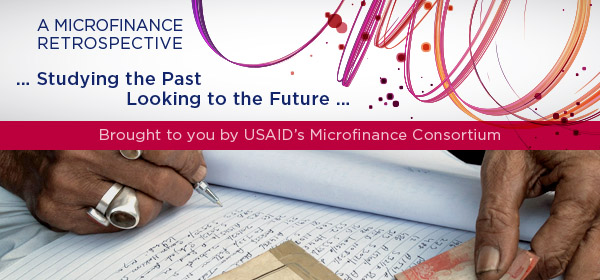Studying the Past, Looking to the Future | Like Totally 80s: Supporting Missions and Partners in the Field

Like Totally 80s: Supporting Missions and Partners in the Field
USAID supported small enterprises and their access to finance since its creation in 1961, but it was in the 1980s that support became more deliberate and focused. As Beth Rhyne[1] put it, “Small enterprise stood at the intersection of two primary (but often conflicting) A.I.D. objectives, its legislative one of reaching the very poor, and the administrative one of promoting the private sector.”
This was a critical time for USAID and the broader development community to gain a richer understanding of microenterprises and their importance to both urban and rural economies, farm and non-farm households. From 1978 to 1990, USAID supported the Small Enterprise Approaches to Employment (SEAE) project, originally through the Office of Urban Development. The two major components of the SEAE project were PISCES I and II (Program of Investment in the Small Capital Enterprise Sector) followed by ARIES (Assistance to Resource Institutions for Enterprise Support). Meanwhile, the Office of Rural Development also supported the Off-Farm Employment Project, led by Carl Liedholm at Michigan State University (MSU). During the life of the SEAE project, the Office of Urban Development merged with the Office of Rural Development to create the Employment and Enterprise Development Division, broadening the focus beyond the urban informal sector to include rural, off-farm enterprises and employment.
While PISCES and the MSU work focused on better understanding enterprises through case studies and evaluations, ARIES[2] was designed to understand and strengthen the organizations that were implementing micro and small enterprise projects. ARIES provided training and technical support to implementing partners such as CARE, Catholic Relief Services (CRS), Freedom from Hunger, Save the Children, and the local partners with whom they worked. In addition to increasing understanding of microenterprises, these projects raised the issues of cost-effectiveness and financial self-sufficiency. Private voluntary organizations (PVOs) and non-governmental organization (NGOs) became more aware and accepting of the need for cost-effectiveness. In addition, the idea of developing self-sufficient financial services providers, with cost-covering interest rates, became more widely accepted.
The SEAE project highlighted the many ways that microenterprise and microfinance could be supported, but left it to USAID Missions to design programs suited to their country context. A 1989 inventory found at least 87 programs focused solely on microenterprise, or with microenterprise as a component of a larger private-sector project. It was estimated that the budgets for these programs were about US$290 million over their total project life.

Congressional Interest
At the same time, political interest in microenterprise and microfinance was growing. The House Committee on Hunger, created in 1984, was looking to find ways to end hunger and malnutrition in developing countries. The advocate for this committee and its original chair was George Thomas “Mickey” Leland III, a Texan congressman with a long history of supporting efforts for the poor and homeless, both in the U.S. and in developing countries.[3] Soon after its creation, the Committee began to explore ways to increase poor people’s access to credit and published a study titled “Banking for the Poor: Alleviating Poverty through Credit Assistance to the Poorest Micro-Entrepreneurs in Developing Countries.” In addition, several pieces of legislation were drafted aimed at ending hunger.
In 1987, the first legislation directing USAID support was enacted as part of a continuing resolution for the 1988 fiscal year. USAID was directed to spend US$50 million for the provision of credit and other assistance to microenterprise, which would increase to US$75 million in fiscal year 1989. No additional funding was provided, but rather USAID was instructed to use existing appropriations to carry out microenterprise programs.
Development of Microenterprise Guidelines
A conference report issued by Congress encouraged USAID to target 80 percent of the lending to businesses owned by the poorest 50 percent of the population, with special support to women-owned businesses and those owned by the poorest 20 percent. It was recommended that loan size be US$300 or less, unless that interfered with the objectives of the program. On the recommendation of the report, USAID established an Advisory Committee on Microenterprise Development. USAID then issued guidelines in Policy Determination No. 17, Microenterprise Program Guidelines, in the Fall of 1988 and directed Missions on how to shape microenterprise programs.
What has been the greatest influence on USAID programming: Was it research, field experience, or advocacy?
Footnotes
- Now Managing Director, Center for Financial Inclusion at Accion.
- ARIES was contracted to Robert R. Nathan Associates, with subcontracts with Control Data Corporation, Harvard Institute for International Development, and Appropriate Technology International.
- Congressman Leland died in 1989 in a plane crash while on route to visit Sudanese refugees in Ethiopia. His legacy lives on in a number of ways, including through the Mickey Leland Center on World Hunger and Peace and connectivity created through USAID’s Leland Initiative.

